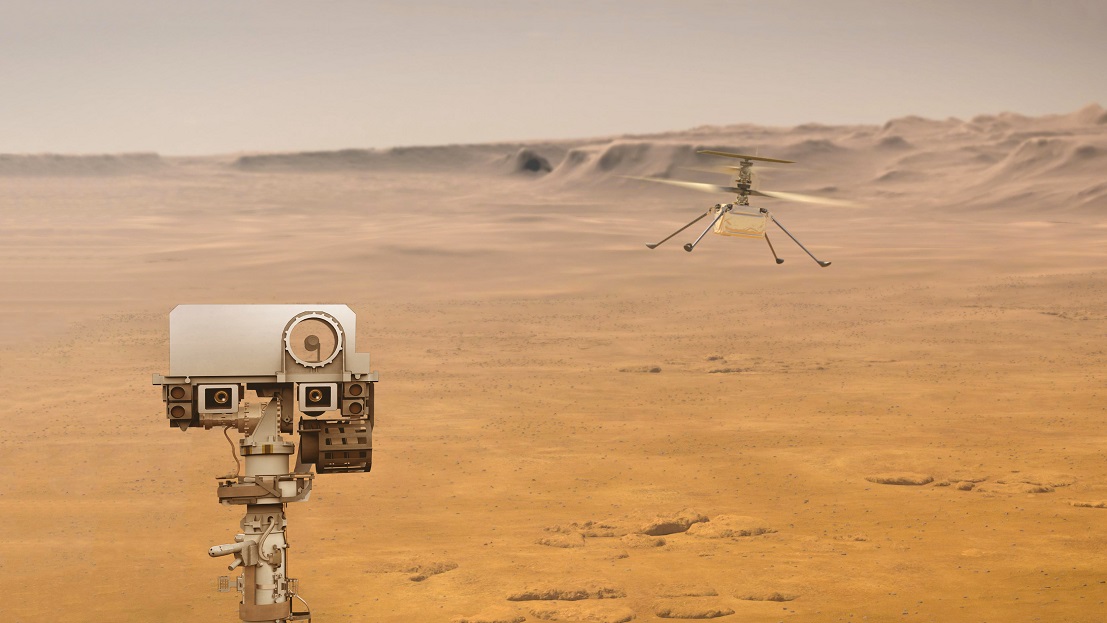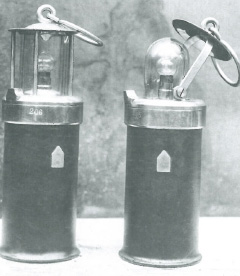As Below, so Above. Spaceflight, Too, Relies on Batteries
Application
October 17. 2023
3 min.
Want to explore strange new worlds, to boldly go where no one has gone before? Don't forget to bring batteries with you.

Those 3 meters in distance and 40 seconds of flight time, one might say, was a small ascent for a helicopter, but a giant leap in the history of powered flight. It was then, on April 19th 2021, when a human-built machine first took off into unfamiliar skies, i.e. propelled itself using atmospheric lift on an extraterrestrial world. The size of a Kleenex box, Ingenuity was released from its "mothership” the Perseverance rover to prove that flight without direct human control is possible in an atmosphere as thin as 0.6 percent of Earth's, with an eye on possible future missions to recover soil samples from the Red Planet.
The helicopter was intended to operate for 30 Martian days, or sols, making five flights at altitudes ranging from 3–5 meters. But as of early October 2023, the craft already performed 61 flights and is still not done flying. A truly incredible achievement only made possible by batteries. Rather surprisingly, Ingenuity is equipped with six off the shelf Li-ion cells, the same ones that you may find in the power drill in your garage. What is high-tech though, is the way the battery is integrated into the craft.
The battery yields 35-40 Wh of energy for every cycle, with each flight limited to 10 Wh of maximum consumption, or 90 seconds of flight time – a restriction put in place to prevent overheating of the engine, rather than being necessitated by short battery life. Still, the chopper needs to recharge whenever possible using a solar panel roughly the size of an A4 sheet of paper, mounted above the coaxial rotors. This is because Ingenuity uses up more than 20 Wh of energy each night to keep warm the very batteries it relies on.
This is not only due to temperatures dropping below -80 °C on a typical night in the Jezero crater, but also because Li-ion cells only work safely in a quite narrow range of temperatures, somewhere between 15 and 30 °C. That’s why the cells are heated with metallic strips attached along their sides, and together with other components, the battery is encased in a foil jacket. What adds to the insulation of the array is Mars’ very thin atmosphere with its low thermal conductivity – on Earth, it would be somewhat harder to keep a Li-ion battery warm at such temperatures.
Faster, or longer
Spacecraft may carry what is called a primary battery which contains all its usable energy when launched and can only be discharged. Sputnik is an example, as well as most of the devices that first touched upon far away worlds, including the Soviet Venera probes, USSR’s Mars 2 and 3 landers, the entry probe NASA’s Galileo sent into Jupiter’s atmosphere, or ESA’s Huygens that landed on Saturn's moon Titan.
Ingenuity, of course, carries a secondary, or rechargeable battery. And although it consists of mass-produced Li-ion cells, the chopper’s battery is tuned for high power delivery over energy density, or, high over long discharge. Given the Li-ion chemistry coupled with the specifics of the mission, rather sooner than later, the sol will come when the cells will have degraded beyond being able to deliver enough power for Ingenuity to perform any more flights. Bear in mind that in Martian atmosphere, the relatively large blades must spin about 10 times faster than on Earth.
But what if the mission profile requires the spacecraft’s secondary battery to perfectly function for an extended period of time? It is nickel-cadmium cells that used to be the first choice thanks to their exceptional reliability, long service life and durability in rough environments including not only low temperatures, but also severe vibrations during the launch or high levels of ionizing radiation. During the typically 15-year long operating life of a larger telco satellite, a Ni-Cd battery is capable of performing tens of thousands, potentially close to 80,000 charge-discharge cycles.
However, it is lithium-based batteries that are being increasingly preferred by satellite manufacturers and operators thanks to their higher energy density. Depending on its configuration, a Eurostar 3000 - the most widely used satellite on geosynchronous orbit, carries a battery weighing up to 200 kilograms which makes up for around 5 percent of its mass. As the launch costs for such a satellite range around EUR 10,000/kg, a comparably lighter battery can save a lot of money. Which, however, is at least partially made up by the higher price tag on Li-ion cells, which may also suffer from safety and other issues.
This is why Lithium-Sulfur batteries seem to be the next big thing in space tech. They offer an even higher energy density, up to five times that of cobalt-based Li-ion cells. But there is a reason why this technology has not yet had its breakthrough. Although Li-S cells have been invented as early as in the 1960s, some of their key issues still haven't been solved. Chiefly the 'shuttle' effect with lithium polysulfide leaking from the cathode, causing very low battery life and rapid self-discharge. The cathode also tends to suffer from expansion during conversion to Li2S, and the cells generally need a large amount of electrolyte.
So, which kind of batteries will be used aboard the spacecraft that will carry humans to Mars or to the Jovian system? Maybe it's not electrochemical cells to whom the spacefaring future belongs, but rather nuclear batteries such as radioisotope thermoelectric generators, or RTGs. And what if fusion power becomes a real thing, after all? We don't know which paths will lead humanity to the stars, which makes space tech as exciting as the scientific findings these magnificent machines deliver.
Related articles
Why Stabilizing the Grid can be done so Efficiently with Batteries
March 27. 2025
2 min.
MoreElectric Buses on the fast Track
March 4. 2025
2 min.
MoreEasy Riding with Battery Power
February 13. 2025
2 min.
MoreMaking Water Flow with Batteries
November 8. 2024
2 min.
More



